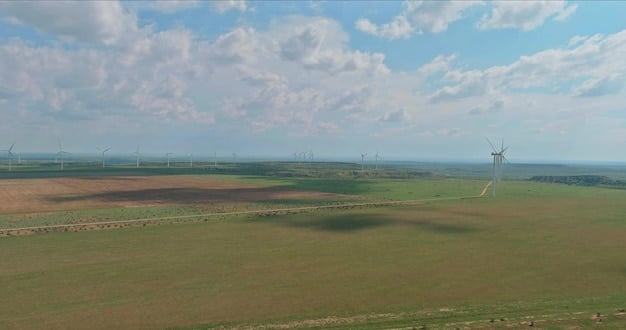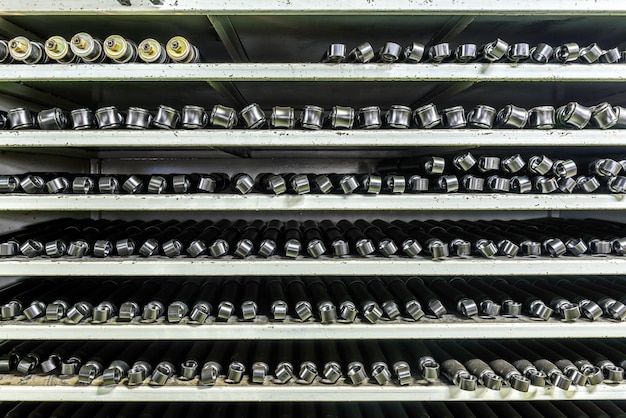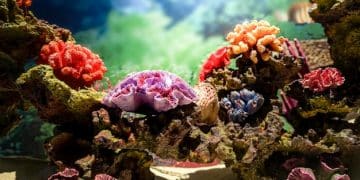Renewable Energy Innovations: Protecting Natural Habitats

The latest innovations in renewable energy, such as advanced solar technologies, enhanced wind energy systems, and smart grids, are pivotal in preserving natural habitats by reducing reliance on fossil fuels and minimizing environmental impact.
Discover how recent breakthroughs in renewable energy are not only powering our world but also playing a crucial role in safeguarding our planet’s precious natural habitats. From cutting-edge solar advancements to innovative wind energy solutions, explore the transformative technologies shaping a greener and more sustainable future where energy production coexists harmoniously with nature.
Harnessing Renewable Energy: A New Era for Conservation
Renewable energy is rapidly evolving, bringing forth innovations that are reshaping the energy landscape. These advancements hold immense potential for reducing our carbon footprint and mitigating the environmental damage caused by traditional energy sources. But how exactly do these innovations translate into benefits for natural habitats?
By transitioning to cleaner energy sources, we can significantly decrease air and water pollution, minimize habitat destruction from resource extraction, and combat climate change, which poses a severe threat to ecosystems worldwide.
Advanced Solar Technologies
Solar energy has come a long way, with advancements in photovoltaic (PV) cells and solar thermal systems. These technologies now offer greater efficiency and cost-effectiveness, making solar power more accessible and practical for widespread use.

Enhanced Wind Energy Systems
Wind energy is another key player in the renewable energy sector, with continuous improvements in turbine design and performance. Modern wind turbines are taller, more powerful, and more efficient, allowing them to capture more energy from the wind.
- More efficient turbine designs that maximize energy capture
- Offshore wind farms that tap into stronger and more consistent winds
- Smart grids that optimize the distribution of wind energy
These advancements in wind energy are boosting energy production while reducing the physical footprint on natural landscapes. Strategic placement and innovative designs minimize the impact on wildlife and habitats.
In conclusion, embracing advanced solar and wind technologies is crucial for building a greener future. These innovations not only provide clean energy but also play a vital role in protecting natural habitats and promoting environmental sustainability.
The Promise of Smart Grids for Habitat Preservation
Smart grids are revolutionizing how we manage and distribute energy. By integrating digital technology and advanced communication networks, smart grids optimize energy usage, reduce waste, and enhance the reliability of renewable energy sources.
These intelligent systems are essential for maximizing the benefits of renewable energy and minimizing the negative impacts on natural habitats.
Efficient Energy Distribution
Smart grids enable a more efficient distribution of renewable energy, ensuring that energy is delivered where and when it is needed most. This reduces the need for excessive infrastructure and minimizes energy loss during transmission, which can be significant in traditional power grids.
Optimized Integration of Renewables
One of the key benefits of smart grids is their ability to seamlessly integrate various renewable energy sources into the grid. This allows for a more diversified energy supply, reducing reliance on single sources and enhancing overall grid stability.
Reducing Environmental Impact
By optimizing energy distribution and reducing waste, smart grids contribute to minimizing the environmental impact of energy production. This includes reducing air and water pollution, minimizing habitat disruption, and lowering greenhouse gas emissions.
- Reducing the need for new power plants through optimized energy use
- Minimizing energy waste and transmission losses
- Enhancing grid stability with diverse renewable energy sources
In summary, smart grids are a game-changer for renewable energy, enabling us to harness the full potential of clean energy sources while minimizing their impact on natural habitats. These intelligent systems are essential for building a more sustainable and environmentally friendly energy future.
Energy Storage Solutions: Enhancing Renewable Energy Reliability
One of the biggest challenges in renewable energy is its intermittency – solar and wind power fluctuate depending on weather conditions. Energy storage solutions are critical for addressing this issue and ensuring a reliable supply of renewable energy.
These technologies store excess energy produced during peak times and release it when demand is high, making renewable energy a more dependable option.
Battery Storage Systems
Battery storage systems are becoming increasingly popular due to their declining costs and improving performance. Lithium-ion batteries are widely used for grid-scale storage, providing fast response times and high energy density.






